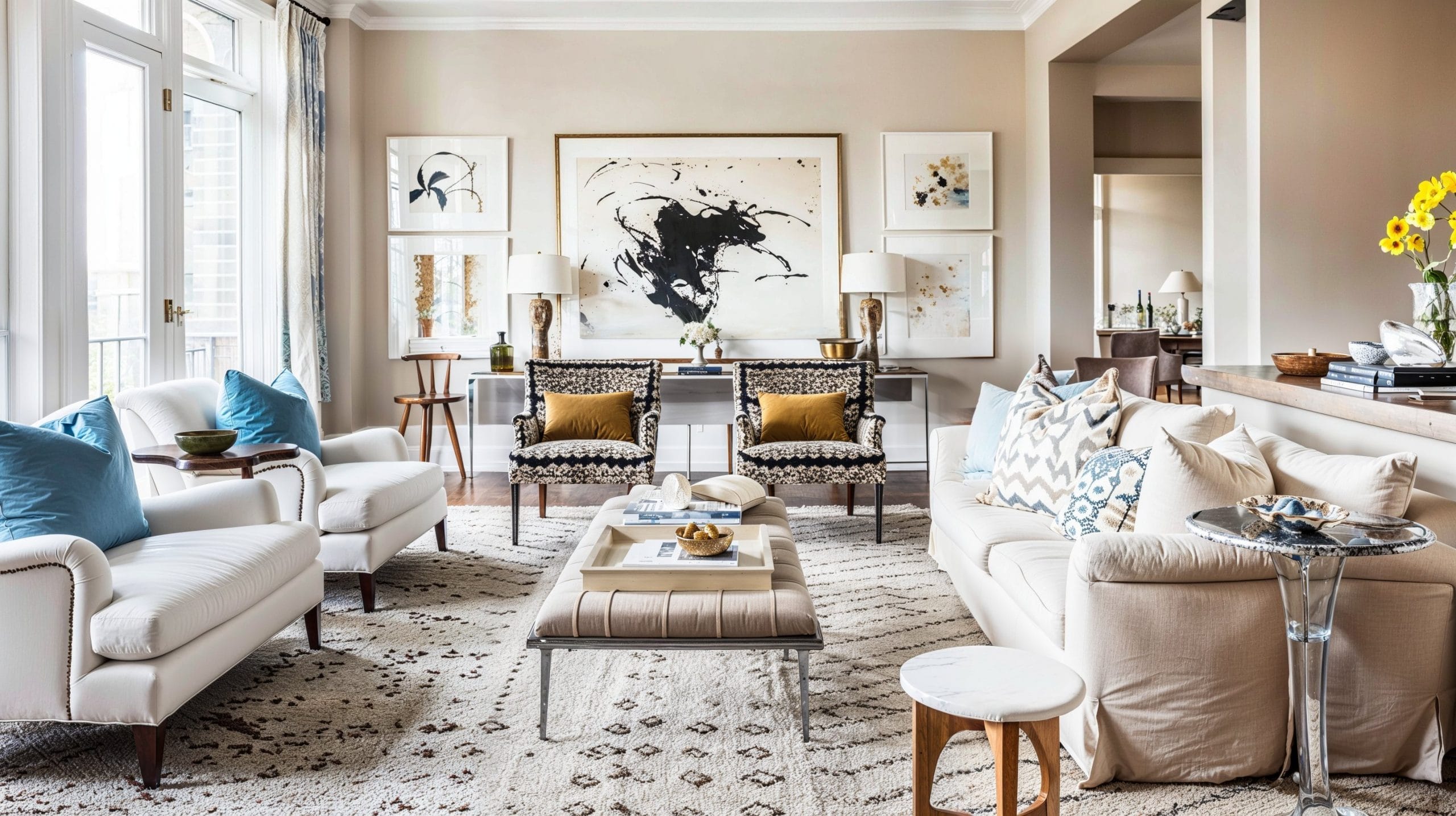Change Your Home With Crucial Concepts of Inside Style and Appearances
By recognizing the impact of shade concept and the significance of appearance and patterns, one can create rooms that are not only aesthetically appealing but also deeply personal. Achieving this stability includes even more than plain design; it incorporates a critical arrangement and an eager understanding of how each aspect connects within a space.
Comprehending Shade Theory
Shade concept is an essential element of indoor layout that substantially affects state of mind, perception, and general aesthetic. Recognizing the principles of color theory allows developers to create rooms that reverberate emotionally with passengers while meeting functional requirements (interior design firms). Colors can be classified right into 3 key types: primary, additional, and tertiary. Each classification plays an important duty in establishing harmony within a space.
The emotional effect of colors is profound; warm colors such as reds and oranges evoke energy and heat, while great tones like blues and environment-friendlies promote calmness and serenity. Additionally, the usage of complementary shades boosts visual passion, producing striking contrasts that can boost an area's appeal.
Neutral colors, on the various other hand, act as a versatile backdrop, enabling various other layout elements to beam. It is essential to consider aspects such as illumination and the space's objective when picking a shade scheme, as these can change the perception of colors throughout the day.
Eventually, a well-considered color design can change an area, fostering a feeling of convenience and design that straightens with the occupants' preferences. Mastery of color theory is, consequently, a crucial ability for any indoor developer intending to develop unified and inviting settings.
Attaining Equilibrium in Style
How can designers attain a feeling of equilibrium in their spaces? Accomplishing balance in style is fundamental to creating unified insides.
Unbalanced balance, on the other hand, counts on differing elements that still achieve a natural appearance. This strategy enables more dynamic and casual setups, supplying rate of interest while keeping equilibrium. By thoroughly choosing varying dimensions, colors, and appearances, developers can produce an aesthetically engaging space that really feels well balanced yet energised.
Radial equilibrium highlights a central prime focus with elements radiating outward. This design is frequently seen in round formats, where furnishings and decoration produce a natural surround that attracts the eye inward.
Eventually, accomplishing equilibrium requires thoughtful consideration of scale, percentage, and the relationships between components. miami luxury interior design. By skillfully using these equilibrium concepts, developers can change rooms right into atmospheres that feel both cosmetically pleasing and functionally unified, enhancing the overall experience for residents
Relevance of Spatial Recognition

An eager sense of spatial understanding allows developers to identify centerpieces within a space, directing the visitor's interest to linked here essential attributes while maintaining a total feeling of unity. It additionally assists in the tactical positioning of lighting, which can significantly influence the assumption of area and state of mind. Comprehending spatial connections allows the designer to cater to the certain demands of citizens, ensuring that each area serves its designated purpose without endangering visual appeals.
Inevitably, spatial awareness is essential for maximizing the potential of any kind of interior area. By thoroughly thinking about the interaction between dimensions, layout, and feature, developers can develop environments that not only fulfill useful requirements however likewise evoke a feeling of read this article comfort and charm, enhancing the general living experience.
Integrating Structure and Patterns
Embracing a varied array of textures and patterns can significantly enhance the visual and tactile allure of an interior area. The strategic usage of various materials-- such as wood, steel, material, and rock-- creates depth and rate of interest, making an area really feel more inviting and dynamic. As an example, incorporating smooth surface areas with harsh textures can develop a balance that draws the eye and involves the detects.
When including patterns, consider both range and rep. Large patterns can act as centerpieces, while smaller, refined designs can match various other components without overwhelming the area. Layering patterns, such as pairing flower cushions with striped tosses, includes complexity and a sense of consistency if carried out attentively.
It is also important to maintain a natural shade scheme, making certain that appearances and patterns function with each other as opposed to contend for attention. By selecting a few key structures and patterns, you can develop an unified visual that reflects your personal style while improving the general setting of the space. Eventually, the mindful unification of these aspects can change a mundane space right into an advanced environment abundant with personality and warmth.
Customizing Your Area
Creating a space that mirrors your personality is vital to achieving a genuinely welcoming environment. Personalization in interior decoration allows you to instill your distinct design and rate of interests into your home, changing it from a plain shelter into a refuge that talks to that you are. Begin by selecting a shade combination that reverberates with your emotions-- bold hues can stimulate, while soft tones supply peace.
Include artwork and design that mirror your passions, whether it be traveling, nature, or abstract ideas. Displaying individual collections, such as books, view it photos, or souvenirs, can stimulate valued memories and create prime focus within an area. Additionally, take into consideration customizing practical items, like upholstered furnishings, to line up with your aesthetic choices.

Conclusion
To conclude, the improvement of a home via the essential principles of interior decoration and aesthetic appeal necessitates an extensive understanding of shade theory, equilibrium, spatial recognition, structure, and customization. Each element adds considerably to developing an unified and functional living environment - interior design firms. By attentively integrating these principles, individuals can improve the visual allure and emotional resonance of their spaces, ultimately fostering a home that shows unique identities while providing convenience and functionality